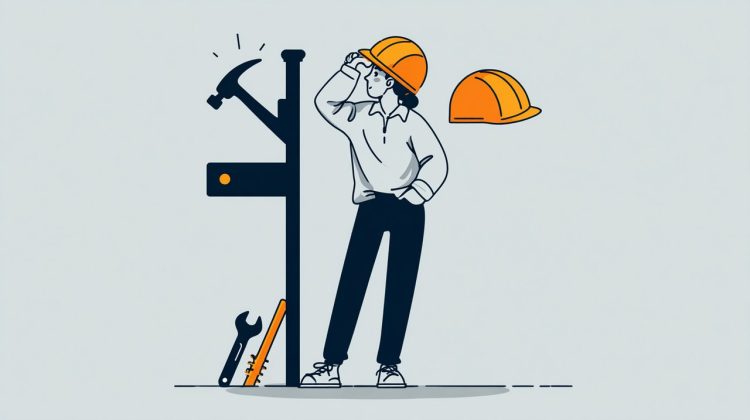Listen, your roof isn’t just a collection of shingles and beams; it’s the first line of defense for your entire home, your cherished possessions, and, most importantly, your family. For decades, I’ve seen homeowners make one critical mistake: they ignore the small whispers of trouble until those whispers turn into a full-blown roar. It’s like a tiny crack in a foundation – you think it’s nothing, but left unchecked, it can bring the whole house down. I once had a client who put off fixing a couple of loose shingles, thinking it’s a ‘minor’ issue. A particularly nasty winter storm rolled through, and that small oversight turned into a flooded attic, ruined insulation, and structural damage that cost them five figures to repair. What started as a $200 fix ballooned into a $15,000 nightmare. Trust me, understanding what you can tackle yourself and when to call in the pros isn’t just about saving a few bucks; it’s about safeguarding your biggest investment and your peace of mind.

Minor Roof Issues You Can Often Tackle (If You’re Up for It)
Now, I’m all for homeowners getting their hands dirty and saving some cash where they can. There are indeed some common roof problems that, with a bit of common sense and the right safety gear, you can handle. But remember, safety is non-negotiable. Don’t be a hero; be smart.
Replacing Missing or Damaged Shingles
Asphalt shingles, bless their common hearts, are usually the first to go when Mother Nature gets angry. Strong winds, old age, or even a stray branch can lift them right off or crack them. Replacing a few of these isn’t rocket science, but it’s crucial. Think of each shingle as a tiny shield; if one shield is missing, that spot is wide open for water to sneak in and start rotting things from the inside out. I’ve seen entire roof decks turn to mush because of a handful of missing shingles.
- Tools You’ll Need: A pry bar, hammer, roofing nails (the short kind!), roofing cement (a small tube is usually enough), a good utility knife, and, of course, your new shingles.
- The Process: Carefully, gently lift the shingles directly above the one you’re replacing. Use that pry bar to get under the nails holding the damaged shingle down. Slide it out. Now, slide your new shingle into place, making sure it lines up perfectly with the existing pattern. Nail it down, but make sure the nail heads are covered with a small dab of roofing cement. Press the overlapping shingles back down firmly.
Addressing Small Leaks (Finding Them & Quick Fixes)
Ah, the elusive leak. This is where things get tricky, even for us pros sometimes. Water is a mischievous traveler; it rarely drops straight down. It’ll run along rafters, through insulation, playing hide-and-seek before finally showing up as a stain on your ceiling. For small, isolated drips, you can buy yourself some time, but this is like putting a band-aid on a gushing wound – it’s not a permanent solution.
- Finding the Source: Head into your attic. Look for water stains, mold, or damp insulation directly above where you see the stain inside. Then, on the roof, check the area directly above for damaged shingles, loose flashing around chimneys or vents, or compromised sealant. Sometimes it’s the smallest crack that causes the biggest headache.
- Temporary Patch: For tiny holes or cracks, a dollop of roofing cement, spread with a trowel, can work. If it’s a bit bigger, you might reinforce it with a piece of roofing fabric. For small tears in flashing, specialized roofing tape can be a quick fix. But hear me loud and clear: these are stop-gap measures. You need a proper, lasting repair, or at least a professional assessment, as soon as humanly possible.
Clearing Clogged Gutters and Downspouts
While this isn’t technically ‘roof repair,’ it’s absolutely critical to your roof’s health. Clogged gutters are like a blocked drain in your sink; if the water can’t go down, it’s going to overflow. And when it overflows from your gutters, it can seep under your shingles, rot your fascia boards, and even cause foundation issues. I’ve seen basements flood because of a handful of leaves in a downspout.
- The Process: Get a sturdy ladder, position it safely, and start removing all that gunk – leaves, twigs, silt – by hand or with a scoop. Once you’ve got the bulk out, flush the gutters with a hose. Make sure the water flows freely towards the downspouts. If it backs up, you’ve got a blockage in the downspout itself. A plumber’s snake or a strong hose spray can usually dislodge it.
Securing Loose Flashing
Flashing is the unsung hero of your roof. These are the metal strips that go around chimneys, vents, skylights – any penetration on your roof. Their job is to literally flash water away from these vulnerable spots. If they’re loose, bent, or corroded, you’ve got an open invitation for leaks.
- The Process: If it’s just loose, you can re-secure it with roofing nails. Then, run a bead of roofing cement or caulk along the edges to seal any tiny gaps. If it’s slightly bent, you might be able to gently bend it back into shape and seal it. But if that flashing is rusted through or severely torn, don’t mess around. That’s a job for a professional.

Alright, So When Do You Pick Up the Phone and Call a Pro?
You’ve done your part, you’ve handled the small stuff. That’s fantastic. But there comes a point where you need to step back. Knowing your limits isn’t a weakness; it’s smart. Trying to fix something beyond your skill set can turn a small problem into a catastrophic one, or worse, put you in harm’s way. I’ve seen too many well-intentioned DIYers end up in the emergency room or cause more damage than they started with.
Extensive or Widespread Damage
If you’re looking at large sections of your roof that are damaged, multiple leaks popping up like whack-a-mole, or if you suspect any of the structural bones of your home – like the decking or rafters – are compromised, you need a pro. This isn’t a patch job; it’s a full-scale assessment. This kind of damage often points to deeper issues that a bucket of tar won’t fix.
Persistent or Undetectable Leaks
You’ve tried everything, you’ve chased that leak from one end of the attic to the other, and it’s still there. Or maybe you can’t even find where it’s coming from. Water can be incredibly sneaky. A professional roofer has the experience to read the subtle clues, and sometimes even the tools – like infrared cameras – to pinpoint the problem that’s been eluding you. They’ve seen it all, and they know the common pathways water takes.
Sagging Roofline or Structural Concerns
This is a red alert, folks. If you look at your roof and see a noticeable dip or sag, that’s not just cosmetic. That’s a severe structural issue. It could mean rotten rafters, compromised trusses, or a massive amount of water trapped up there. This isn’t just about repairs; it’s about the very integrity of your home and the safety of everyone inside. Don’t walk, run to the phone and call a pro immediately. This is a potential collapse waiting to happen.
Aging Roof Nearing End of Lifespan
Just like people, roofs have a lifespan. Most asphalt shingle roofs are good for 20 to 30 years, if they’re lucky. If your roof is getting up there in years, and you’re seeing widespread issues – granules washing into your gutters, shingles curling up like potato chips, or leaks popping up everywhere – you’re likely beyond spot repairs. You’re looking at a full replacement. A reputable contractor can give you an honest assessment of its remaining life and whether it’s worth throwing good money after bad trying to fix a dying roof.
Steep Pitches or Significant Heights
I’ve walked countless roofs in my career, and I can tell you, some of them are just plain dangerous. If your roof has a steep pitch (meaning it’s really slanted) or it’s a two-story house or higher, climbing up there without proper safety equipment is asking for trouble. Professionals have specialized harnesses, ropes, and ladders, not to mention the training and insurance, to do this work safely. Your life is worth more than a DIY repair.
Complex Roof Structures
Some roofs are like architectural puzzles – multiple dormers, intricate valleys, tricky hips, skylights everywhere. These aren’t just pretty; they’re complex. Doing repairs on a complicated roof without specialized knowledge can create new leak points or even make existing ones worse. You need someone who understands how water flows over and off these intricate designs, not just how to slap a shingle down.
Your Life, Your Roof: Safety First, Always
I can’t stress this enough: safety on the roof is paramount. I’ve seen too many accidents that could have been avoided. Before you even think about stepping on a ladder, make sure it’s stable, on firm, level ground. Wear non-slip footwear – no sandals, no sneakers. Gloves are a must, and eye protection can save your vision from flying debris. If you can, have a spotter, someone to stabilize the ladder and keep an eye on you. And for crying out loud, never, ever work on a wet, icy, or extremely windy day. And if it’s anything more than cleaning gutters or a very simple ground-level inspection, don’t work alone. Your safety isn’t something to gamble with.
The Payoff: Peace of Mind and a Solid Home
Ultimately, taking care of your roof, whether it’s a quick DIY fix or knowing when to call in the cavalry, is about protecting your home. Regular inspections – even just from the ground with binoculars – can spot issues before they become major headaches. Keep those gutters clean, especially in fall and spring. Trim back those overhanging tree branches that scrape against your shingles or drop debris. Empowering yourself with this knowledge, handling those minor repairs, it’s a good feeling, a sense of accomplishment. But knowing your limits, recognizing when to bring in a qualified professional? That’s not just vital; it’s the mark of a truly smart homeowner. It’s about ensuring that your home remains that safe, durable shield for years to come, safeguarding your investment and, just as importantly, your peace of mind. Remember that client whose attic flooded? All this effort is to ensure you never have to experience that kind of heartbreak. It’s about turning your house into a fortress, not a leaky sieve.
💡 Frequently Asked Questions
Your roof is the primary defense for your home, possessions, and family. Addressing small issues early prevents them from escalating into costly structural damage, safeguarding your biggest investment and peace of mind.
Homeowners can often manage tasks such as replacing missing or damaged asphalt shingles, temporarily patching small leaks, clearing clogged gutters and downspouts, and re-securing loose flashing around penetrations.
You should call a professional for extensive or widespread damage, persistent or undetectable leaks, a sagging roofline or other structural concerns, an aging roof nearing its lifespan, roofs with steep pitches or significant heights, or complex roof structures.
Always use a stable ladder on firm ground, wear non-slip footwear, gloves, and eye protection. It's recommended to have a spotter, and never work on wet, icy, or extremely windy days. Avoid working alone for anything beyond simple ground-level inspections or gutter cleaning.





